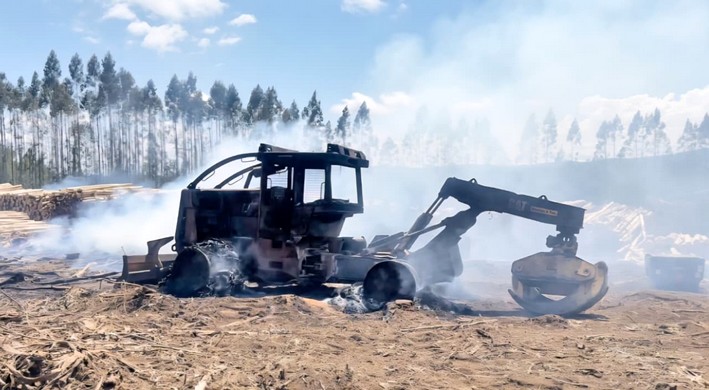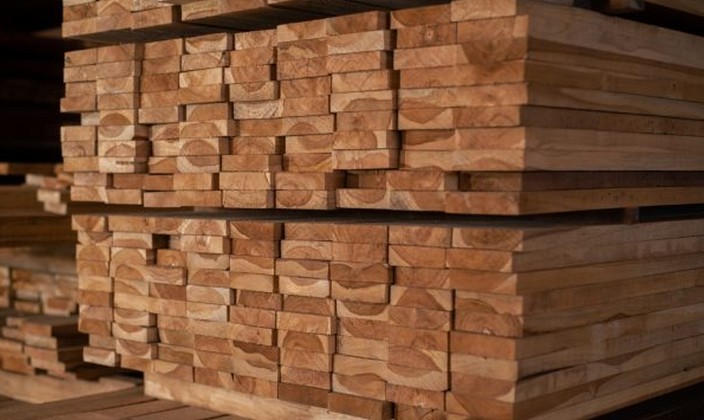Forest Engineers Add Value to Native Forests with Large-Scale Species Production
One of the focuses is continuous improvement in both plant quality and genetic condition, which translates to better adaptability to sites and higher growth rates for forests geared toward timber production.
"Our goal is to continue growing hand in hand with Research and Development (R&D), to forge strategic alliances with universities and research centers, but above all, to have a highly skilled team that adds quality and efficiency to the value chain of our clients' businesses—demonstrating that small and medium-sized enterprises can indeed conduct applied, high-quality research."
This is the premise of Neri Carrasco, who co-founded Plangen alongside Jaime Büchner, both forest engineers. The nursery specializes in native forests, particularly because both had backgrounds in nurseries and genetics during their time in the private sector and academia, giving them the most valuable asset in this field: experience and knowledge.
"Focusing on this was a real challenge; we had to initiate a development process that required extensive research. Unlike the advances in technological packages for genetics and plant production of exotic species, there were no ready-made solutions for native forests. It took us several years to crack the code for mass germination of many species—something that might seem basic," the professional explained.
She added that while trials worked at a small scale, large-scale plant production was a different reality. It was a phase of intense learning-by-doing, but today it allows them to produce millions of native plants continuously and supply a market they hope will grow increasingly attractive.
This has enabled them to diversify their business lines while maintaining a focus on adding value to native forests and incorporating new plant species that present opportunities for the forestry and agricultural industry.
Continuous Improvement
In this regard, Neri Carrasco noted that one of their priorities is continuous improvement in both plant quality and genetic condition, leading to better site adaptability and higher growth rates for timber-focused forests. In restoration, the goal is genetic traceability and capturing genetic diversity through germplasm collection methods and assigning plant batches to restoration areas.
She explained, "The production system is mixed—70% is grown in containers (speedling), a method that yields plants ranging from 30 to 70 cm in height, depending on container size. These are conditioned under outdoor shade systems with varying irrigation, fertilization, and sanitary controls. The major advantage of container plants is that their roots are protected, extending the planting window."
The remaining 30% of the nursery's production is bare-root, primarily pioneer species. This system prioritizes taller plants with larger collar diameters, suitable for afforestation in areas with heavy weed presence, frequent frost, and risks of damage from hares and rabbits.
"Our proposal also emphasizes variety. That’s why we don’t just produce the most in-demand native species like coigue, raulí, and oak—we also cultivate a wide range of other native species, especially those suited for honey production and watershed management," said Jaime Büchner.
Another focus is their maqui genetic improvement program. "Our connection with maqui, along with murta and calafate, began many years ago and is now a firm commitment. We’re developing genetic selections and management techniques tailored to southern conditions, as our dream is to contribute to a native berry industry—innovative, identity-driven, and above all, environmentally, socially, and economically sustainable, capturing the value of these and other native species with equal or greater potential," emphasized Neri Carrasco.
Biotechnology
Another initiative is applying biotechnological techniques for the in vitro mass propagation of native forest species. This involves direct in vitro organogenesis using adult and juvenile material from four native species: raulí, lenga, tineo, and ñirre.
This process takes place in controlled environments with regulated temperature, photoperiod, and nutrient media containing macro- and micro-elements and growth regulators to trigger shoot production, elongation, and rooting. "Under these conditions, we can significantly increase plant numbers in a small space within a short time. Our focus is especially on raulí, as a partnership with Infor has launched a genetically improved plant production program, enabling third parties to access this high-value genetic material and add value to native forests," the engineer said.
"Innovation and research aren’t just about the end products but also the processes and adoption of cutting-edge technologies to bridge the technological gap in native plant production," concluded the entrepreneur.

















